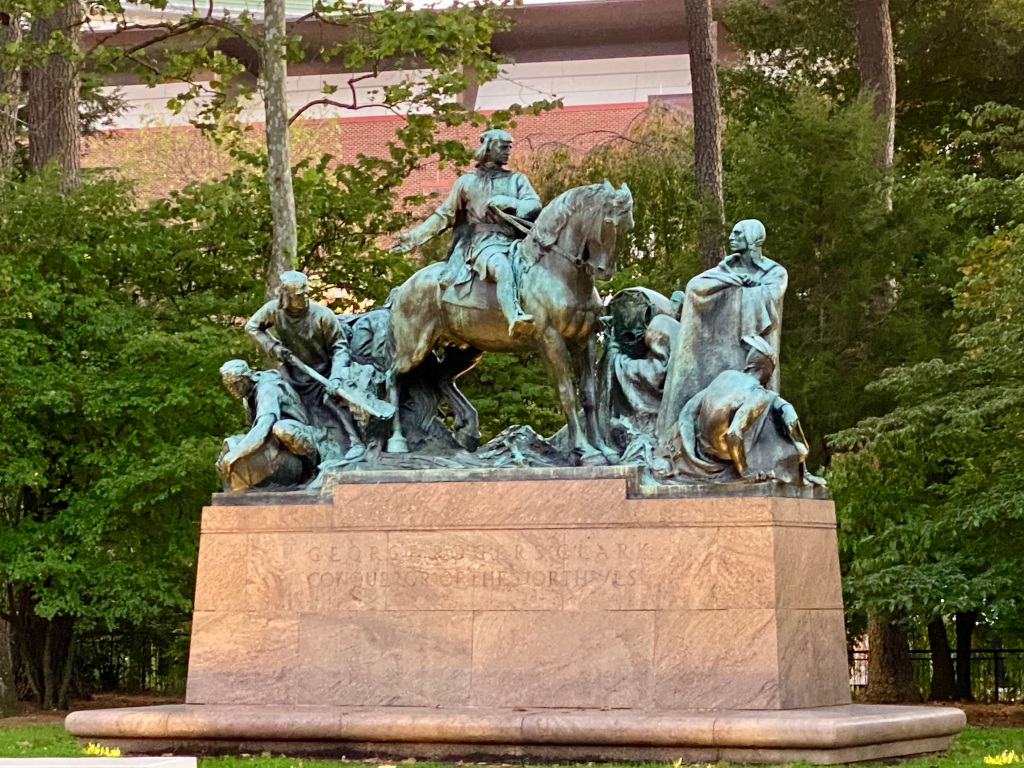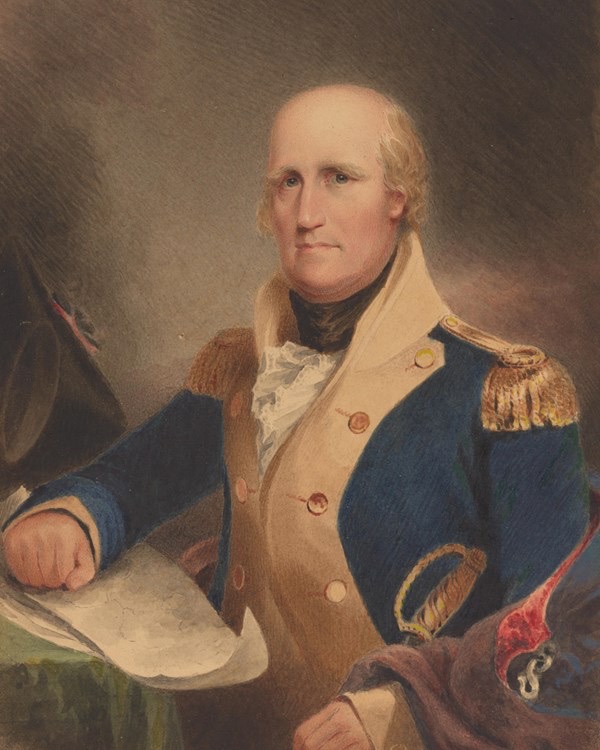Book Review
Sterner, Eric. Till the Extinction of This Rebellion George Rogers Clark, Frontier Warfare, and the Illinois Campaign of 1778-1779. Yardley, PA: Westholme Publishing, LLC, 2024.
Historian Eric Sterner, in his third Revolutionary Era monograph, offers a well-reasoned account of Revolutionary Era George Rogers Clark’s Illinois campaign, revising the general’s military legacy. Clark, a militia officer, obtained approval from Virginia’s revolutionary government to conduct a daring raid on British outposts in modern-day Illinois and Indiana, settlements populated by citizens of French and mixed Native American ancestry. While Clark’s intrepid military campaign was an overwhelming success, bitter financial disputes with Virginia authorities over account books, dalliances with French and Spanish agents, and alcoholism overshadowed valuable Revolutionary War contributions, leaving the officer’s reputation in tatters at the end of his life.

Nineteenth-century historians resurrected Rogers’ legacy, labeling him as the “Conqueror of the Northwest,” overemphasizing his accomplishments as he captured a mere two towns in a vast region stoutly controlled by Native Nations. During this reassessment period, statues and memorials triumphally recognized Clark’s Revolutionary War capture of the French settlements of Kaskaskia and Vincennes, which helped establish American claims to its western boundary at the banks of the Mississippi River. In the twenty-first century, one writer avers that claims that Clark was the conqueror of the northwest are absurd. Other historians assert that Clark did little to win the American Revolution, are dismissive of Clark’s accomplishments, and emphasize his racism toward Native Americans. As a result, the University of Virginia administrators removed a prominent statue on its campus deemed to be racist and offensive towards Native Americans.
Sterner, an expert on the Revolution in the West, offers a more dispassionate view of Clark’s contributions, devoid of presentism memorial issues, focusing on the “who, what, where, and when” of Clark’s 1778-9 Western military campaign (xi). Central to Sterner’s reappraisal is Clark’s strategic military objective to protect the nascent Kentucky settlements from continually effective British and Native American attacks. Clark believed the key to Kentucky’s security was capturing Detroit, the British main supply base. In his plan, the first step would be to capture the lightly guarded Illinois country, including the former French settlements of Kaskaskia and Vincennes. The loss of these British posts would cut off Detroit from the West, opening the way to Detroit and guarding the Kentucky settlements from Native Nations attacks.

Clark led a tiny force of less than two hundred soldiers in the daring secret attack on the Illinois country. The charismatic officer defeated the British through deception, psychological warfare, and occasional violent ruthlessness. Sterner credits the frontier strategist for honing a reputation for strength, planning audacious attacks, and aggressively carrying out military operations despite foul weather, few soldiers, and limited supplies. Remarkably, Clark achieved success with minimal casualties on both sides despite Britain’s Native American allies having the upper hand and more significant numbers. To understand the broader geopolitical situation, Sterner identifies and assesses the various Native Nations that participated in the conflict.
While Clark successfully captured the Illinois country, an attack on Detroit failed to materialize. General George Washington did not believe he possessed sufficient soldiers and supplies to fund a Detroit expedition, leaving the Virginians to finance the assault from their resources. Even though politicians such as Patrick Henry and George Mason sought to use a military expedition to further their western land claims, no further expenditures were allocated to Clark to resume offensive operations against Detroit after the 1778-9 campaign. Despite this standdown, Sterner concludes that Virginia received a “remarkable return on its modest investment in George Rogers Clark” (128). By comparison, Clark’s capture of the Illinois country was notably successful, particularly compared with the dismal failure of the Massachusetts-led assault on Penobscot Bay, the only other major colonial military strike independent of Congress and the Continental Army.
Sterner’s account offers several strengths. He avoids passing moral judgment on any party by interpreting Clark and his Illinois country campaign based on eighteenth-century culture. He portrays people and events in the way contemporaries viewed them. Refreshingly, readers are left to make their moral assessments. Additionally, Sterner notes discrepancies among the primary sources, identifying what is known conclusively and what may be apocryphal or inferential. Areas that readers may be left wanting are questions about the capture of Quebec’s Lieutenant Governor, Henry Hamilton, at Vincennes. Kentuckians lived in fear of his raiding parties dubbing the British lieutenant governor “hair buyer,” referring to bounties paid to Indians for Kentuckian scalps. Interesting questions include: did his seizure make a difference in settler security? What happened to Hamilton in captivity, given his brutal reputation, and who replaced him?
Despite the success of George Rogers Clark’s campaign in the relatively bloodless capture of the Illinois country, his life and career remain controversial. After the revolution, Clark’s reputation was marred by his engagement in potentially treasonous activities, advocacy for Indian removal, and his death as an impoverished alcoholic. While challenging, these controversial aspects of his life add depth and complexity to his character and legacy as a successful military commander. Eric Sterner’s work serves to illuminate these successes and controversies, inviting readers to delve deeper into the life of this enigmatic figure.

Gene,
Thanks for sharing. I particularly liked:
“ Refreshingly, readers are left to make their moral assessments.”
Kate
>
LikeLike